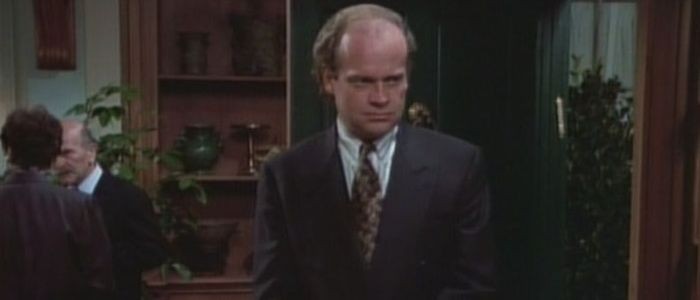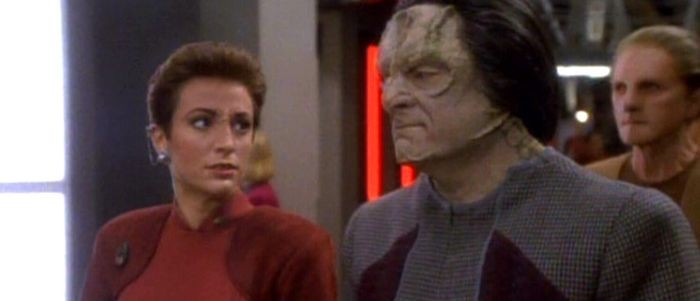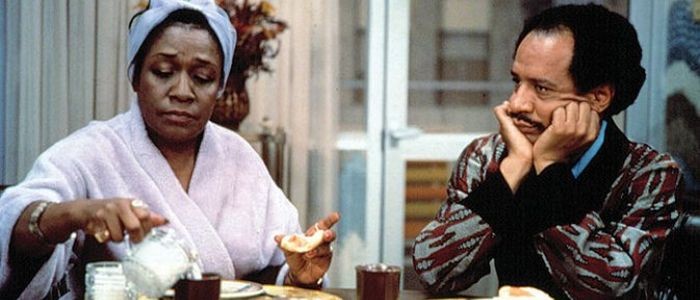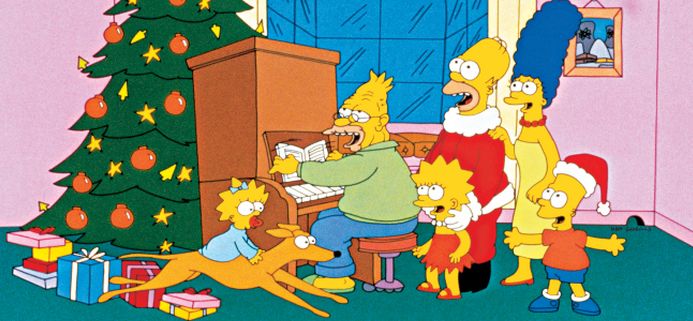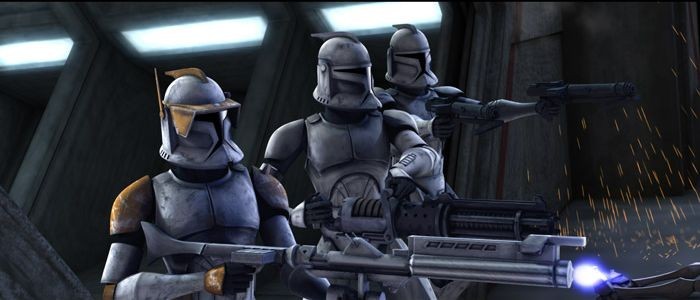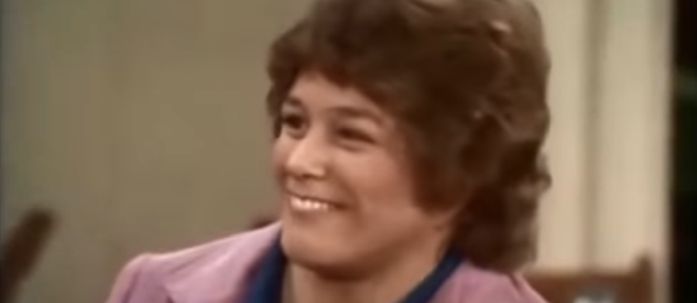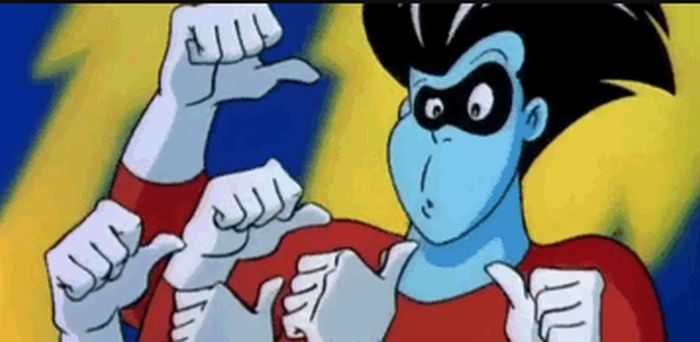The 10 Best Television Spin-Offs Of All Time
The successful television spin-off has a high wire act to maintain. It has to differentiate itself from its source material while maintaining enough of what fans love so they'll come along with it in the first place. But for every Better Call Saul there are a dozen Joeys – spin-offs that fail right from the start. With the former returning for its third season, let's take a look at ten spin-offs that were just as good (if not better) than their parent series.
Better Call Saul
Spun-Off From: Breaking BadThe New Cast: Kim Wexler (Rhea Seehorn) as Saul's hopeless, way smarter half. Howard Hamlin (Patrick Fabian), Saul's foil. Charles "Chuck" McGill, Jr. (Michael McKean,) Saul's older and disapproving brother.Why It's the Same: It's all about someone getting far in over their head, becoming better at their chosen profession and suffering because of it.Why It's Different: Thanks to Bob Odenkirk, this show is a lot funnier than Breaking Bad...but it's certainly no comedy. The show plays with your expectations nearly every episode, changing genres from noir to procedural at will.The Moment It Came Into Its Own: Season 1, episode 2 – "Mijo."
Ending the first episode of Better Call Saul with the entrance of Tuco, the cartoonish gangster villain who gave Walter White his first taste of what his new life was going to be like, was a bit disconcerting. Would the show be nothing more fan service, cameos of characters from Breaking Bad with nothing to offer those who weren't obsessed with the original show?
Thankfully not, as the second episode showed the world that it was truly going to be its own thing. (AMC apparently knew this, as they aired the first two episodes on back-to-back nights.) "Mijo" is where we see Saul open up and reveal his magic, as he talks down Tuco from killing two of his dumb clients who tried to scam Tuco's poor abuelita out of her money.
He does so with his hands tied together in the middle of a desert, where he's about to be shot and left for dead. We see him realize his situation, switch his tactics, and use his silver tongue to talk himself out of being murdered. He is cut loose and allowed to go free...but his conscience cuts in, and he realizes he has to save his two skateboard-riding idiot clients as well. He starts by telling Tuco about their mother, their sweet little widow mother, who works day and night for her ungrateful sons. He manages to talk Tuco down from killing them, to amputating their legs, to breaking their legs, to just breaking a measly one leg each. Saul is horrified and rattled afterwards, but he's proud of his work.
"You're the worst lawyer." the skater screams as Saul helps his broken leg into a wheelchair after their adventures. "The worst lawyer ever!"
"Hey, I just talked you down from a death sentence to six months' probation," Saul quips. "I'm the best lawyer ever."
And it's just gotten better from there.
Fraiser
Spun-Off From: CheersThe New Cast: Niles (David Hyde Pierce,) Dad (John Mahoney,) Roz (Peri Gilpin,) Daphne (Jane Leeves) – the entire main cast is completely new, and almost never before mentioned in Cheers. In fact, Frasier had once told his drinking buddies that his dad was dead.Why It's the Same: It's still a sitcom.Why It's Different: Dr. Frasier Crane never seemed to particularly care about his patients at the bar, but in the radio station, he cares perhaps even less. It's still a snappy, incredibly witty show, but by moving away from an ensemble of bar regulars, the show is allowed to delve a lot deeper into what makes these characters tick.The Moment It Came Into Its Own: Season one, episode 11 – "Death Becomes Him"
Nothing proved how deep the show would delve into its the characters than this episode, where Frasier confronts his own mortality. He does so after his father's doctor dies from a heart attack, sending Frasier on a spiralling quest to figure out what, if anything, the man was doing that caused his death. He decides to divvy up his belongings among his father and brother, and has a deep discussion with his dad about how to deal with a fear of death. But there is no reason for the doctor's death – he was Frasier's age, in perfect physical fitness, and didn't abuse drugs or alcohol. Frasier deals with this in his own panicky way, eventually crashing the family's shiva to figure out more about his health history. It's to the show's credit that they manage to make an episode with this subject matter as hilarious and smart as any of the others, showing how it wasn't going to be content living in Cheers' shadow – it wanted to tackle bigger, weirder issues.
Angel
Spun-Off From: Buffy the Vampire SlayerThe New Cast: The half-demon seer Doyle (Glenn Quinn), the vampire hunting Charles Gunn (J. August Richards), demonic dimension escapee Winifred Burkle (Amy Acker), and supernatural karaoke bar owner Lorne (Andy Hallett).Why It's the Same: A lot of the same characters, a lot of vampire fighting, and a lot of goofy Joss Whedon humor.Why It's Different: Like most spin-offs, the series saw the main character changing cities, but it didn't end there. Befitting the subject matter, the show was a lot darker, and managed to delve a lot deeper into the whole backstory of the vampire underworld.The Moment It Came Into Its Own: Seaons 1, episode 9 – "Hero."
While it started off as a monster-of-the-week supernatural procedural, this is the episode that proved Angel wasn't messing around. This episode deals with tormented half-human/half-demon Doyle, who is struggling with revealing his feelings for the decidedly non-demon Cordelia. It ends as a bomb is about to go off that will kill anyone with human blood, and the title of the episode comes into play as Doyle knocks down Angel so that he can disarm it and save everyone by sacrificing himself. A show killing off one of its main characters so early into its run was shocking, to say the least, and Angel started finding its footing after that as a more serious alternative to the campy Buffy.
Star Trek: Deep Space Nine
Spun-Off From: Star Trek: The Next GenerationThe New Cast: Nearly everyone but Worf (Michael Dorn).Why It's the Same: It's got the Federation, tons of aliens, and the same prime directive as the last two crews. It's Star Trek through and through.Why It's Different: Both previous Star Trek shows saw a group of adventurous explorers traveling around the universe, landing on planets and solving problems before moving on to their next exploit. Deep Space Nine didn't have it so easy. By focusing on a stationary hub, we were immersed in the complex relationships between all the various species in the area and delved deep into their different cultures and beliefs. While Kirk and Picard tried to force their perspective onto nearly everyone they came across, Sisko had no choice but to learn the ways of all the different species working and visiting the space station, and to figure out what would be the greatest good for the most people. They all needed to live together here, after all. It's the most realistic, and downbeat, of all the Treks.The Moment It Came Into Its Own: Season 1, episode 18 – Duet.
A Cardassian named Marritza shows up to the station and is immediately arrested by Kira for being a war criminal, since he's afflicted with an illness he could have only contracted at a labor camp that Kira herself had helped liberate. She knows he was involved in the atrocities committed there in some way, and does everything she can to convince her superiors that she's right. Once she does, she's allowed to lead the investigation, and the real meat of the story begins, with a back and forth between Marritza and Kira that's more compelling and exciting than nearly anything in most Star Trek episodes.
Daria
Spun-Off From: Beavis and Butt-HeadThe New Cast: Everyone but the girl those two numbskulls tormented with a chant of "Diarrhea-Cha-Cha-Cha."Why It's the Same: They're both outcasts from society? That's about it.Why It's Different: Daria was always the grunge alternative to Beavis and Butt-head's metal. Daria is self-aware to a fault in all the ways that Beavis and Butt-Head aren't. While far too few people understood how intelligent of a show Beavis and Butt-Head really was, no one made the mistake with Daria.The Moment It Came Into Its Own: Season 1, episode 11 – "The Road Worrier"
This is when Daria starts losing her front and develops a crush on Trent, her best friend Jane's brother. She is so taken by him that she internalizes her sarcasm for once during a trip to "Alternapalooza," and numerous trials threaten to ruin her fun.
While her sister and fellow students are heading to the concert oblivious to the bands playing and solely concerned about their appearances, Daria starts to realize that her new companions don't care about what she does (including peeing in the woods). They end up missing the show, but Daria spends some time alone with Trent, and realizes that more people think like her than she knows. Her facade cracks a little here and we're given a little bit more of a look into how she really thinks.
The Jeffersons
Spun-Off From: All in the FamilyThe New Cast: Tom and Helen Willis (Franklin Cover and Roxie Roker,) an interracial couple (one of the first on TV!) from upstairs, Florence Johnston (Marla Gibbs) as the sassy maid, and Harry Bentley (Paul Benedict) as their British next-door neighbor.Why It's the Same: They're both sitcoms about families that dealt heavily with the social issues of their times. Both shows also dealt openly with racism, something America had been uncomfortable with doing on TV (and still struggles to deal with today).Why It's Different: The Jeffersons were always higher class than the blue collar Bunkers, and their move to the Upper East Side of Manhattan (in an apartment with four bathrooms) reflects that, although the show still dealt heavily with issues of race and preconceptions.The Moment It Came Into Its Own: All In The Family season 5, episode 17 – "The Jeffersons Move Up"All In The Family spawned a staggering five spin-offs, two of which saw their own spin-offs spin off. While a case can certainly be made for Maude being the best, it's hard to deny the influence of The Jeffersons. Part of the brilliance of the show's creators is that the parting episode of the Bunker's neighbors on All In The Family was used as basically a pilot for the new show.
In The Jeffersons Move Up, Edith Bunker shows up at the beginning to bid a tearful farewell to her friend before the show switches over to the new family. This introduced their new status, fancy apartment (again, four bathrooms,) and allowed the actual first episode of The Jeffersons to air a week later and hit the floor running with everything already established.
The Simpsons
Spun-Off From: The Tracy Ullman ShowThe New Cast: Everyone not in the immediate family. Which, as you surely know, is more characters than could possibly be counted here.Why It's the Same: It's about the same dysfunctional family from the Tracy Ullman sketches.Why It's Different: It's no longer just a flimsy series of sketches – at least for the first ten seasons or so.The Moment It Came Into Its Own: Season 1, episode 1 – "Simpsons Roasting on an Open Fire"
Yes, the very first episode. Not many shows start off as strong as this one: the episode where Bart gets a tattoo and nearly ruins his family's Christmas. We are introduced to Bart's impulsive shenanigans, Homer's stupidity and heart, Mr. Burns' greed, Barney playing Santa, and Santa's Little Helper bringing the family together. If there was a better way to kick this show off, it's hard to imagine.
The moment the show came out of its own...well, that's some matter of debate. Some believe it was as early as Season 10, but the show keeps on limping on. Watching the first few seasons after browsing recent episodes shows where it went wrong – the characters have become caricatures of themselves, and all traces of sentimentality and family bonding have been removed. But here, in the first episode, everything that would make the series great is on display.
Star Wars: The Clone Wars
Spun-Off From: Star Wars: The Clone Wars (film)The New Cast: Tons of characters only mentioned briefly (if at all) in the Star Wars movies are given larger roles here, such as Kit Fisto, Aurra Sing, and Bossk.Why It's the Same: It's a direct continuation of the events of the film.Why It's Different: It took four tries to get us to finally care about the Clone Wars.The Moment It Came Into Its Own: Season 1, episode 5 – "Rookies"
After the rightfully panned Clone Wars film, a lackluster movie with the same title, and the abysmal second prequel movie, there was little hope that The Clone Wars show would actually be good. Consider the galaxy surprised when this show turned out to be far greater than any of the prequels! Disney was smart to keep this one part of the canon, as this episode shows. "Rookies" single-handedly does more to humanize the clone troopers than anything in the franchise to this day, with the gripping story of a group of new recruits that have to band together to survive a night of war. It's here that you realized the show wasn't just for kids, and could deal with complex issues of life and death during wartime. It only got better from there, managing to make Anakin's descent into darkness believable in all the ways the movies didn't.
The Facts of Life
Spun-Off From: Diff'rent StrokesThe New Cast: Edna Garrett (Charlotte Rae) is the only recurring character, as she heads off to become a housemother at a boarding school.Why It's the Same: This is still a show that wants to teach you something, and there's still a moral to nearly every episode.Why It's Different: Girl problems vs. boy problems.The Moment It Came Into Its Own: Season 2, episode 5 – "Cousin Geri"
After horrible ratings for its first season, the show was completely reworked for its second. They wrote four of the students out of the show completely and tried to focus instead on the remaining girls, realizing that they could only tell so much story within the half hour format. The tactic worked and ratings surged, and The Facts of Life went on to become one of the longest-running sitcoms of all time.
This episode introduced a character with cerebral palsy, as Geri Jewell's "Cousin Geri" character offered an open look into her disorder. Cousin Geri became a recurring character, but this stopped when the actress was told that she would only get to show up one episode a season because it would take away from the main cast. But even so, as we all know representation matters, and having her character deal with these issues so frankly meant many viewers got to see a similar face on the screen and realize that they're not alone.
Freakazoid!
Spun-Off From: AnimaniacsThe New Cast: Anyone that's not wearing a shirt with "F!" on it.Why It's the Same: It's the same zany, madcap humor.Why It's Different: It's no longer a skit show, for one, although skits do occasionally happen. (Anything can happen.)The Moment It Came Into Its Own: Season 1, episode 2 – "Candlejack"
Deadpool who? Freakazoid was breaking the fourth wall in the 90's. It also alienated children and never found an audience, only becoming a cult hit when older folks discovered the show's 24 perfect episodes during rebroadcasts and on DVD.
In this episode–
Watch! As Freakazoid tries in vain to fly before being reminded that's not one of his powers and runs off with arms outstretched instead!Scream! As Candlejack prompts you to do so as he abducts children!Laugh! As Freakazoid takes you behind the scenes of the production to talk about the wonderful cast creating the episode!
Kids' shows this clever were a rarity then and they're a rarity now.

